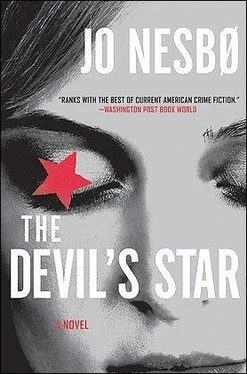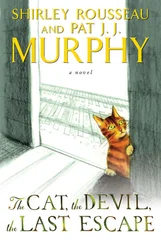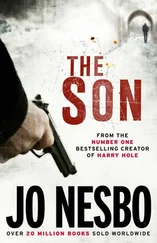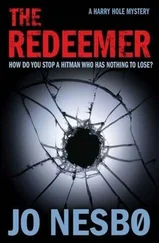Jo Nesbo - The Devil's star
Здесь есть возможность читать онлайн «Jo Nesbo - The Devil's star» весь текст электронной книги совершенно бесплатно (целиком полную версию без сокращений). В некоторых случаях можно слушать аудио, скачать через торрент в формате fb2 и присутствует краткое содержание. Жанр: Триллер, на английском языке. Описание произведения, (предисловие) а так же отзывы посетителей доступны на портале библиотеки ЛибКат.
- Название:The Devil's star
- Автор:
- Жанр:
- Год:неизвестен
- ISBN:нет данных
- Рейтинг книги:4 / 5. Голосов: 1
-
Избранное:Добавить в избранное
- Отзывы:
-
Ваша оценка:
- 80
- 1
- 2
- 3
- 4
- 5
The Devil's star: краткое содержание, описание и аннотация
Предлагаем к чтению аннотацию, описание, краткое содержание или предисловие (зависит от того, что написал сам автор книги «The Devil's star»). Если вы не нашли необходимую информацию о книге — напишите в комментариях, мы постараемся отыскать её.
The Devil's star — читать онлайн бесплатно полную книгу (весь текст) целиком
Ниже представлен текст книги, разбитый по страницам. Система сохранения места последней прочитанной страницы, позволяет с удобством читать онлайн бесплатно книгу «The Devil's star», без необходимости каждый раз заново искать на чём Вы остановились. Поставьте закладку, и сможете в любой момент перейти на страницу, на которой закончили чтение.
Интервал:
Закладка:
Aune tapped his index finger against the first point he had written up on the flip chart.
‘The typical serial killer is a white man between 24 and 40 years of age. As a rule he acts alone, but he can work with others, in a pair, for example. Brutality against the victim is an indication that he is acting alone. The victims can be anyone, though generally they fall into the same ethnic group as the killer, and in exceptional cases they may be known to him.
‘Usually he finds the first victim in an area he knows well. In the public imagination there are always special rituals connected with the murders. This is not true, but when rituals do occur, it is often in connection with a serial killing.’
Aune pointed to the next point where he had written
PSYCHOPATH/SOCIOPATH.
‘However, the most characteristic trait of the serial killer is that he’s American. Only God – and perhaps a couple of psychology professors at Blindern – knows why. That’s why it is interesting that the people who know most about serial killings – the FBI and the American legal profession – distinguish between two types of serial murderer: the psychopath and the sociopath. The professors I mentioned believe that both the distinction and the concepts stink, but in the homeland of the serial killer most law courts follow the McNaughten Rules which decree that it is only the psychopath who does not know what he’s doing while committing the crime. The psychopath, therefore, unlike the sociopath, escapes a prison sentence or – as is probably the case in God’s own country – execution. Apropos serial killers, it is my opinion that, hm…’
He sniffed at the marker pen and raised a surprised eyebrow.
Waaler put up his hand. Aune nodded.
‘What sentence is apportioned is very interesting,’ Waaler began, ‘but first we have to catch him. Have you any practical advice we can use?’
‘Are you crazy? I’m a psychologist, aren’t I?’
Laughter. Aune, gratified, bows.
‘Yes, I’ll be coming to that, Inspector Waaler. Let me first say that if any of you are already becoming impatient, you have a tough time ahead of you. From experience, nothing takes as long as catching a serial killer. If they are the wrong type, at any rate.’
‘What’s the wrong type?’ It was Magnus Skarre’s question.
‘First of all, let’s have a look at how the people who draw up psychological profiles for the FBI distinguish between psychopaths and sociopaths. The psychopath is often a maladjusted individual without a job, without any education, with a criminal record and a variety of social problems. Unlike the sociopath, who is intelligent, apparently successful and living a normal life. The psychopath stands out and easily falls under suspicion, whereas the sociopath can disappear in the crowd. It always comes as quite a shock to neighbours and friends when a sociopath is uncovered. I was talking to a psychologist who works as a profiler for the FBI and she told me that the first thing she considered was the timing of the killings. Killing takes time of course. A useful lead for her was whether the killings had taken place on weekdays, at weekends or on national holidays. The latter would suggest that the killer had a job and would increase the likelihood that you were dealing with a sociopath.’
‘So if our man kills during the national holidays it suggests that he has a job and is a sociopath?’ Beate Lonn asked.
‘It is somewhat premature to draw such conclusions of course, but taking that into account with what we already know, perhaps. Is that practical enough for you?’
‘Practical, yes,’ Waaler said, ‘but it’s also bad news if I read you right?’
‘Correct. Our man looks a lot like the wrong type of serial killer. The sociopath.’
Aune gave the gathering a couple of seconds to let that sink in before going on.
‘According to the American psychologist, Joel Norris, the serial killer goes through a mental process involving six phases with each killing. The first is called the aura phase where the person gradually loses their grip on reality. The totem phase, the fifth phase, is the killing itself, the serial killer’s climax, or, to be more precise, the anticlimax, because the killing is never able to fulfil the hopes and expectations of catharsis and purification that the killer associates with the taking of a life. That’s why the killer goes straight into the sixth phase, the depressed phase. This in turn leads into a new aura phase in which he builds himself up, ready for the next killing.’
‘Round and round in circles then,’ said Bjarne Moller, who had crept in unnoticed and was standing by the door. ‘Like a perpetuum mobile.’
‘Except that a perpetual motion machine repeats the operations without any changes,’ Aune said. ‘However, the serial killer goes through a process that changes his behaviour over the long term. Characterised, fortunately, by a decreasing level of control, but, unfortunately, also by an increasing level of brutality. The first murder is always the one that is most difficult to recover from and thus the so-called cooling-down period afterwards is also the longest. It produces a long aura phase in which he builds himself up for the next killing and he gives himself a good long time to plan it. If the killer has taken a great deal of care with details at the scene of a crime, if the rituals have been carried out with precision and the risk of discovery is small, it suggests that he is still at the beginning of the process. In this phase he is perfecting his technique to become even more efficient. This is the worst phase for the people trying to catch him. However, after he has killed a few times, the cooling-down periods typically become shorter and shorter. He has less time to plan, the murder scenes are messier, the rituals less neatly performed and he takes greater risks. All of this indicates that his frustration is growing. Or let me put it another way, that his thirst for blood is escalating. He loses self-control and is easier to catch. But if at this time attempts to capture him fail, he can be frightened off and he will stop killing for a while. In this way he has time to calm down and he will begin at the beginning again. I hope these examples are not too depressing?’
‘We’re surviving,’ Waaler said. ‘Could you say a little about this particular case?’
‘Fine,’ Aune replied. ‘Here we have three premeditated murders -’
‘Two!’ It was Skarre again. ‘For the time being, Lisbeth Barli is only reported missing.’
‘Three murders,’ Aune said. ‘Believe me, young man.’
Some of the policemen exchanged glances. Skarre seemed to want to say something, but then changed his mind. Aune continued.
‘The three murders have been committed with the same number of days between each one. And the ritual of mutilation and decorating the body has been carried out in all three cases. He cuts off one finger and compensates by giving the victim a diamond. Compensation is, by the way, a familiar feature with this kind of brutality, typical of killers who have been brought up according to strict moral principles. Perhaps this is a lead you can follow up since there is not much morality left in homes around Norway.’
No laughter.
Aune sighed.
‘It’s called gallows humour. I’m not trying to be cynical and my points could probably be better made, but I am trying not to let this case bury me before we have even started. I recommend you do the same. Anyway, in this particular case, the intervals between the killings and the fact that rituals are being performed indicate self-control and an early phase.’
Someone cleared their throat gently.
‘Yes, Harry?’ Aune said.
‘Choice of victim and place,’ Harry said.
Читать дальшеИнтервал:
Закладка:
Похожие книги на «The Devil's star»
Представляем Вашему вниманию похожие книги на «The Devil's star» списком для выбора. Мы отобрали схожую по названию и смыслу литературу в надежде предоставить читателям больше вариантов отыскать новые, интересные, ещё непрочитанные произведения.
Обсуждение, отзывы о книге «The Devil's star» и просто собственные мнения читателей. Оставьте ваши комментарии, напишите, что Вы думаете о произведении, его смысле или главных героях. Укажите что конкретно понравилось, а что нет, и почему Вы так считаете.












